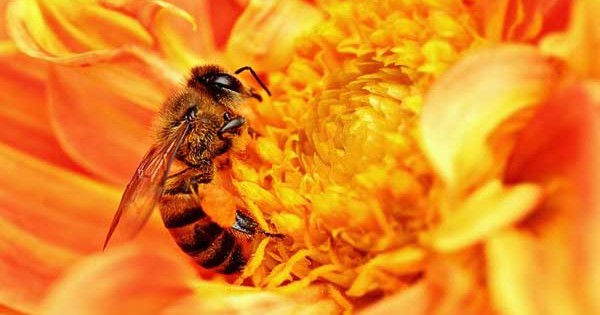
On my 11th birthday, my father presented me with a hive of honeybees (Apis mellifera) for my very own. It was part of his apiary, a long row of whitewashed bee boxes he kept along the edge of a field. I went out to visit my new hive, whereupon the bees rose up in a body and chased me away. At least that’s how I remember it. I thanked my father (I hope), but never went back to my hive. Although we possessed the usual beekeeper gloves and veiled bee helmet, my father could go out and work his bees in his shirtsleeves. He would bring the honey in to one of the farm’s small outbuildings—our honey house—and we would extract honey from honeycombs by whirling it in a honey extractor centrifuge. We’d pour the honey into jars, label the jars, and sell them door-to-door in town (Chestertown, Maryland). Sales were easy since everyone adored Winslow Long’s honey.
I thought, at age 11, that I knew quite a bit about honeybees. Ha Ha.
Honeybees pollinate. They go out among the flowers and collect nectar, from which they make honey, and pollen, which they use as food. Along the way, of course, they distribute pollen from flower to flower.
Flowers are the sexual organs of angiosperms (flowering plants). The flower’s female part, the stigma, is typically in the center; it sits atop a tubular “style” that rises up from the ovary. The male parts, anthers, sit on filaments surrounding the stigma. Anthers produce pollen grains that produce sperm. Bees don’t see red well, but they are attracted to yellow, blue, and violet. Petals provide landing pads, and many petals have a nectar gland at their base. Flowers also put out fragrance molecules to draw pollinators.
We depend on honeybees to pollinate corn, cherries, apples, apricots, melons, prunes, plums, almonds, carrot seed, seed onions, seed alfalfa, cantaloupe, cranberries, blueberries, etc. Honeybees pollinate about one-fourth of the food we Americans eat, according to the American Beekeeping Federation.
A remarkable behavior of honeybees is the waggle dance system of communication. Bees returning to the hive report the location of the good flowers—by dancing. They run about on the vertically hung honeycombs, drawing imaginary shapes that suggest kissing zeroes. The center stroke of this bee-glyph is the waggle. If the waggle is straight up, the good flowers may be found by flying in the direction of the sun. If the waggle is a zigzag, the goods may be found by flying at the angle of the zigzag. Timed buzzing conveys how far to go in the given direction. (Longer buzzing denotes farther away.) Bees in the hive join the dance, learn where to go, and then fly off, straight to the mark. This is the terpsichorean system of the honeybees according to an exquisite book, The Superorganism, by Bert Hölldobler and E. O. Wilson. (In Greek mythology, Terpsichore was one of the nine muses. She invented dancing, presided over it, and danced to amuse her sister muses.)
In late spring or early summer, after new queens are made by feeding larvae royal jelly, bees are ready to swarm. Taking the old queen and leaving new queens to fight it out among themselves for the home nest, about two-thirds of the workers—from 8,000 to 20,000 bees—depart, rising in the air, hovering, and then hanging in a great buzzing mass on a branch. Now a search committee, several hundred experienced foragers go hunting for a new nest site. The others stay with the queen, keeping her warm and protecting her.
How the scouts determine where to establish the new nest prompts scientist Thomas D. Seeley, in Honeybee Democracy (another stunning book), to call the colony a cognitive entity. The new site must be large enough to store honey for the winter, and it must afford protection from predators and winter weather. The scouts fly out in all directions and return to waggle dance their results. Every option is explored. A long and enthusiastic waggle dance will prompt more scouts to go and inspect that site. There’s plenty of conflict and a recruitment process, until at last a consensus is reached. In this way the colony chooses the best site. All without leadership. All without Robert’s Rules of Order.
Colony Collapse Disorder, recognized in 2006, kills 30 percent of hives each year (beekeepers replace them). Its cause seems to be a cumulative combination of stresses, including mite and fungal infestations, and pesticides. In particular a systemic insecticide called clothianidin (“Poncho”) has longterm effects, contaminating soil and remaining in plant tissue for years. It’s one of a class of chemicals that likely cause the honeybee’s immune system to break down over time. Beekeepers, some scientists, and environmentalists have called on the EPA to ban clothianidin, and petitions have attracted some 1.5 million signatures in support of such a ban. Mine was one of them.

